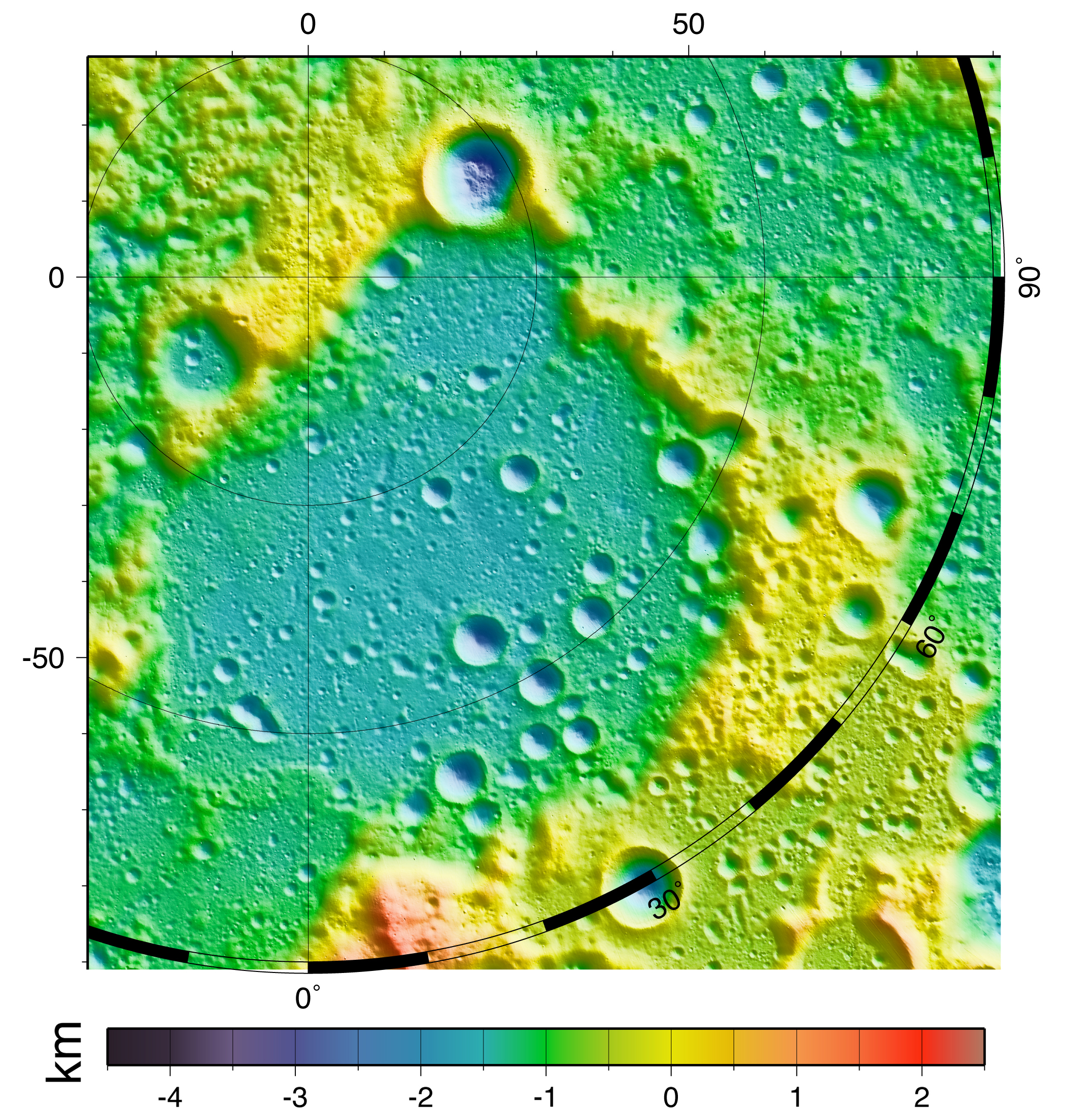Peary (crater) on:
[Wikipedia]
[Google]
[Amazon]

 Peary is the closest large
Peary is the closest large
Persistently illuminated regions at the lunar poles: Ideal sites for future exploration"
''Researchers find ideal spot for moon base
CNN, April 18, 2005 (accessed 2010 August 22) due to this near-constant illumination, which would provide both a relatively stable temperature and a nearly uninterrupted solar power supply. It is also near permanently shadowed areas that may contain some quantity of frozen water.P. Gläser, J. Oberst, G.A. Neumann, E. Mazarico, E.J. Speyerer, and M.S. Robinson,
Illumination conditions at the lunar poles: Implications for future exploration"
''Planetary and Space Science'', 2017. https://doi.org/10.1016/j.pss.2017.07.006
LAC-1 area
- Map of northern lunar pole {{DEFAULTSORT:Peary (Crater) Impact craters on the Moon

 Peary is the closest large
Peary is the closest large lunar
Lunar most commonly means "of or relating to the Moon".
Lunar may also refer to:
Arts and entertainment
* ''Lunar'' (series), a series of video games
* "Lunar" (song), by David Guetta
* "Lunar", a song by Priestess from the 2009 album ''Prior t ...
impact crater
An impact crater is a circular depression in the surface of a solid astronomical object formed by the hypervelocity impact of a smaller object. In contrast to volcanic craters, which result from explosion or internal collapse, impact crater ...
to the lunar north pole
The lunar north pole is the point in the Northern Hemisphere of the Moon where the lunar axis of rotation meets its surface.
The lunar North Pole is the northernmost point on the Moon, lying diametrically opposite the lunar south pole. It define ...
. At this latitude the crater interior receives little sunlight, and portions of the southernmost region of the crater floor remain permanently cloaked in shadow. From the Earth
Earth is the third planet from the Sun and the only astronomical object known to harbor life. While large volumes of water can be found throughout the Solar System, only Earth sustains liquid surface water. About 71% of Earth's sur ...
the crater appears on the northern lunar limb, and is seen from the side.
Observation and Etymology
Since Peary is located nearly on the limb of the Moon as viewed from Earth, high-quality images of the crater were not available until space probes started photographing the Moon; the first high-quality images came from the US Lunar Orbiter 4 spacecraft. Since it is located nearly at the lunar north pole, it was named after the polar explorerRobert Peary
Robert Edwin Peary Sr. (; May 6, 1856 – February 20, 1920) was an American explorer and officer in the United States Navy who made several expeditions to the Arctic in the late 19th and early 20th centuries. He is best known for, in Apri ...
.
Physical features
Peary is nearly circular, with an outward bulge along the northeast rim. There is a gap in the southwestern rim, where it joins the slightly smaller crater Florey. The outer rim of Peary is worn and eroded, creating a rugged mountainous ring that produces long shadows across the crater floor. The crater floor itself is relatively flat, but is marked by several small craterlets, particularly in the southeastern half. The southern third of the interior remains cloaked in shadows, and so its features can be readily discerned only by means of ranging methods (for example, laser altimetry). Because of the low sun angle, the average temperature on the crater floor or Peary is between 30 and 40 K, one of the coldest locations in the Solar System.Illumination
In 2004, a team led by Dr Ben Bussey ofJohns Hopkins University
Johns Hopkins University (Johns Hopkins, Hopkins, or JHU) is a private research university in Baltimore, Maryland. Founded in 1876, Johns Hopkins is the oldest research university in the United States and in the western hemisphere. It consi ...
, using images taken by the Clementine mission, determined that four mountainous regions on the rim of Peary appeared to remain illuminated for the entire lunar day. These unnamed " peaks of eternal light" are due to the Moon's extremely small axial tilt, which also gives rise to permanent shadow at the bottoms of many polar craters. ''Clementine''s images were taken during the northern lunar hemisphere's summer season, and more detailed lunar topography collected by the Lunar Reconnaissance Orbiter
The Lunar Reconnaissance Orbiter (LRO) is a NASA robotic spacecraft currently orbiting the Moon in an eccentric polar mapping orbit. Data collected by LRO have been described as essential for planning NASA's future human and robotic missions t ...
(LRO) showed that no points on the Moon receive perpetual light during both winter and summer.Emerson J. Speyerer and Mark S. Robinson,Persistently illuminated regions at the lunar poles: Ideal sites for future exploration"
''
Icarus
In Greek mythology, Icarus (; grc, Ἴκαρος, Íkaros, ) was the son of the master craftsman Daedalus, the architect of the labyrinth of Crete. After Theseus, king of Athens and enemy of Minos, escaped from the labyrinth, King Minos sus ...
''
Vol. 222, No. 1, January 2013, pp. 122-136 https://doi.org/10.1016/j.icarus.2012.10.010 . Retrieved 21 May 2018.
The northern rim of Peary is considered a likely site for a future Moon base,CNN, April 18, 2005 (accessed 2010 August 22) due to this near-constant illumination, which would provide both a relatively stable temperature and a nearly uninterrupted solar power supply. It is also near permanently shadowed areas that may contain some quantity of frozen water.P. Gläser, J. Oberst, G.A. Neumann, E. Mazarico, E.J. Speyerer, and M.S. Robinson,
Illumination conditions at the lunar poles: Implications for future exploration"
''Planetary and Space Science'', 2017. https://doi.org/10.1016/j.pss.2017.07.006
References
* * * * * * * * * * *External links
LAC-1 area
- Map of northern lunar pole {{DEFAULTSORT:Peary (Crater) Impact craters on the Moon